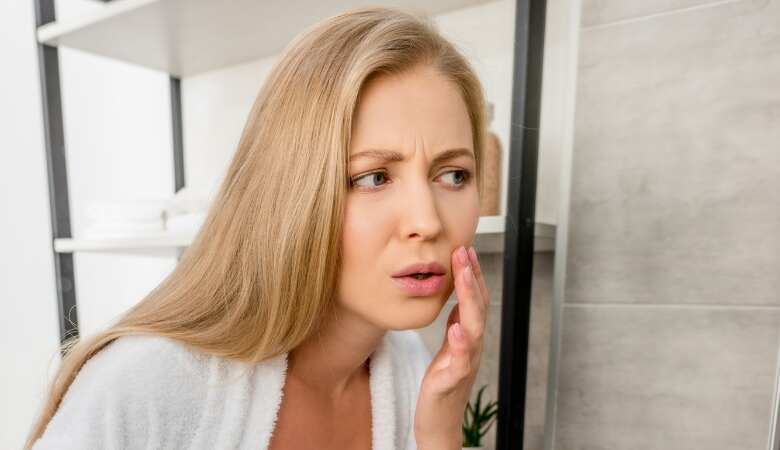Have small red dots appeared on an area of your body? It may be petechiae. Our general practitioners tell you everything about this often banal skin condition, which can sometimes reveal an underlying pathology.
What are Petechiae?
Petechiae are tiny red, purple or purplish spots on the skin or mucous membrane. They are caused by tiny bleeding under the skin resulting from trauma, excessive pressure, infections, or blood clotting disorders.
The main difference with purpura is the size, which is less than 3mm in diameter. These petechial spots may form in clusters or appear scattered across the skin. They do not fade when pressed, unlike spots caused by normal pressure on the skin. Petechiae are often associated with underlying medical conditions such as:
- A blood clotting disorder: Diseases of the blood, such as leukaemia, or of the immune system, such as Immunological Thrombocytopenic Purpura (ITP), can lead to thrombocytopenia, that is to say, a reduction in the number of blood platelets, which can cause minor bleeding under the skin, manifesting itself as petechiae.
- Serious viral or bacterial infections: Certain severe diseases, such as septicemia such as meningitis, for example, can lead to abnormal blood clotting, causing petechiae.
- Allergies: Regarding allergies, petechiae can occur due to hives. Hives are an inflammatory skin reaction that food allergies, medications, insect bites, or other allergens can trigger. When hives are severe, they can cause tiny bleeding under the skin, causing petechiae.
- Trauma: Even minimal injuries can also cause petechiae, particularly in areas where the skin is thin, such as around the eyes.
- Excessive pressure: Prolonged pressure on the skin or depression of the mucous membranes can lead to petechiae. Petechiae can, therefore, appear on the face, neck, or mouth after vomiting, childbirth, or even violent coughing episodes.
A healthcare professional should evaluate any sudden or unusual appearance of petechiae to determine the cause and obtain appropriate treatment.
What are the Symptoms of Petechiae?
Generally speaking, petechiae are clinical manifestations or warning signs of an underlying disease that do not cause their symptoms. However, if they appear secondary to a specific pathology, they may be accompanied by certain symptoms, such as:
- Itching: Some people may experience itching around the petechiae, mainly if a rash or allergic reaction causes it;
- Pain: In some cases, petechiae may be accompanied by pain, particularly if associated with trauma or a severe underlying medical condition;
- Fatigue: If petechiae are caused by an underlying illness such as thrombocytopenia or severe infection, fatigue may be an associated symptom;
- Other symptoms specific to the underlying cause may also be present depending on the medical condition causing the petechiae. For example, a fever, excessive bleeding, bruising, or joint pain may accompany certain conditions.
How do we Recognize Petechiae?
Recognizing petechiae can be crucial in identifying any underlying health problems. Here are some characteristics that can help you realize petechiae:
- Size and colour: Petechiae are red, purple or purplish-coloured spots under the skin. They are less than 3mm in diameter;
- No erasure with vitropressure: The petechiae do not disappear when pressure is exerted on them, for example, by pulling the skin from side to side or by pressing a glass on them;
- Distribution: Petechiae may appear singly or in clusters. They can develop on any part of the body but are often seen on the face, neck, chest, arms and legs at any age;
- Association with other symptoms: Petechiae may be associated with other symptoms, such as itching, pain, fever or unusual fatigue. Observing these symptoms in conjunction with petechiae may indicate an underlying medical condition;
- Progress: If petechiae persist, expand or become more numerous over time, it is essential to consult your GP or a general practitioner for a thorough evaluation.
Appearance of red dots on the skin: When should you consult?
It is essential to see a healthcare professional as soon as you notice petechiae on your skin, especially if they appear suddenly or if you are concerned about their presence. Here are some indications on when to consult in case of petechiae:
- Sudden Onset: If you notice the sudden appearance of petechiae on your skin, it is recommended to seek prompt medical attention to assess the underlying cause;
- Persistent or increasing petechiae: If petechiae persist for several days, spread over a larger area of the skin, or become more numerous over time, consult your primary care physician for further evaluation;
- Associated symptoms: If petechiae are accompanied by symptoms such as fever, fatigue, pain, excessive bleeding or any other unusual manifestation, medical consultation is recommended to determine the underlying cause. If a fever is present, you must consult urgently to rule out meningitis;
- Medical History: If you have a history of thrombocytopenia, bleeding disorders, severe infections or serious allergic reactions, it is advisable to consult a doctor as soon as petechiae appears.
Also Read: Tips to Protect Your Skin Correctly
This post was last modified on May 26, 2024

